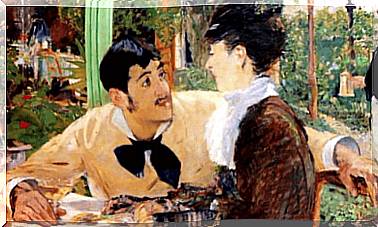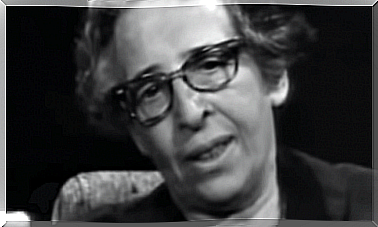The 10 Types Of Psychopaths According To Kurt Schneider

Kurt Schneider was a German physician, psychiatrist, philosopher and pioneer in his field. He is considered the most important representative of the Heidelberg School of Psychiatry, along with Karl Jaspers. His work on identifying 10 types of psychopaths was an important milestone in the history of this branch of psychology.
The Heidelberg School was unique for its approach to mental illness because it emphasized the biological factors that affected patients. Emil Kraeplin had a significant influence on this school of thought with his work on classifying disorders according to their manifestations and not their causes.
Kurt Schneider’s classification of the different types of psychopaths also had an important influence on later developments in psychiatry. It is based on the idea that a psychopath is someone who deviates ambiguously from normative behavior. From that point of view, there are 10 types of psychopaths.

1. Types of Psychopaths: The Hyperthymic Psychopath
The first type of Schneider is the hyperthymic psychopath. Hyperthymic psychopaths are usually happy, active, and impulsive. Schneider spoke of this personality type as the optimistic temperament of a thin-blooded man.
He described this type as argumentative and sympathetic fraudsters who have a tendency to scam, cheat and get involved in minor transgressions.
2. Depressed
These psychopaths tend to be morose and moody, although it is not always easy to spot. They hide what they feel. For some, their primary emotion is melancholy, while for others it is irritation or paranoia.
This type and the former type often suffer from alcoholism. People with paranoid depression can also be extremely callous.
3. Insecure or Distrustful
Within this group, there are two types of psychopaths: sensitive and obsessive-compulsive. The first type is very impressionable, but they find it difficult to express their emotions.
On the other hand, obsessive-compulsive psychopaths turn their insecurities into obsessions. They can also be very inflexible. Although people in this category often appear “strange” and even “suspicious”, they rarely commit crimes.
4. Fanaticism
Psychopaths in this category place an excessive value on a group of ideas and live them out with great emotional intensity. Some are passive fanatics and some are combative fanatics.
In general, you see this typology more often in adult men and women. They may commit minor crimes based on their beliefs, but they usually limit themselves to things that cause social unrest.
5. Types of Psychopaths: Attention Seekers
The distinguishing feature of this group is vanity. They always pretend to be more than they are (than themselves and others). For example, they deliberately tell lies and people believe them.
Attention-seeking psychopaths also fake their emotions, making it impossible to form relationships with other people. They don’t know how to love.
This group has a number of subcategories. For example, here we have eccentrics (those who get attention with strange actions), boasters (those who constantly brag), and liars (those who organize structured fantasies to deceive others.
6. Labile Psychopaths
It is easy to confuse this type with the depressed type. In this case, however, the person has episodes of intense sadness or bad mood that start suddenly and then stop.
It is like an intense storm that unexpectedly begins to blow. Labile psychopaths are often addicted and can occasionally commit emotional crimes. This type is typical of very young or very old people.
7. Explosive
Explosive psychopaths have violent minds and even petty situations can make them explode. Most explosive psychopaths are women under the age of 50.
They get involved in all kinds of crimes. These psychopaths are disobedient, rebellious and have a bad influence on others. They are usually childish, underdeveloped and have little self-control.
8. Affectionless
This is the pinnacle of psychopathy. Unaffected psychopaths lack compassion, shame, embarrassment, or guilt. Their main characteristic is a very low level of self-awareness. They tend to be sullen, cold and antisocial.
People in this category commit all kinds of crimes, including crimes involving violence. That said, there are quite a few who, despite their lack of scruples, manage not to break the law.
9. Types of Psychopaths: Weak-willed Psychopaths
This kind of psychopath is easy to influence and open to all kinds of stimuli. They are nice and reasonable, but inconsistent and malleable. For example, persons in this category often engage in robbery, embezzlement, fraud and prostitution.
They could commit crimes because of the social pressure in their social group. Weak psychopaths are usually young people.
10. Asthenic
Some types of asthenia (weakness) are physical and others are mental. In both cases, however, the person with asthenia keeps a close eye on the body and mind.
In either case, they can also start to feel very strange in their own company. They may suffer from imaginary disorders such as hypervigilance. However, they rarely commit crimes. Instead, they are often seen in the hospital.
Types of Psychopaths: Conclusion
In conclusion, Kurt Schneider’s 10 Types of Psychopaths are a classification tool that is now considered obsolete. That said, many of his ideas have become the basis for later developments. In general, no one makes any serious claims about toppling their categories. Instead, they adapt them.









